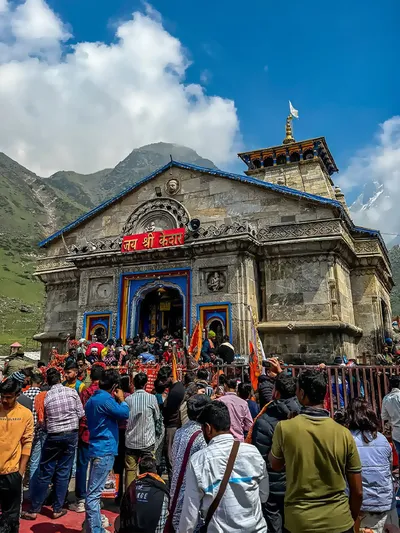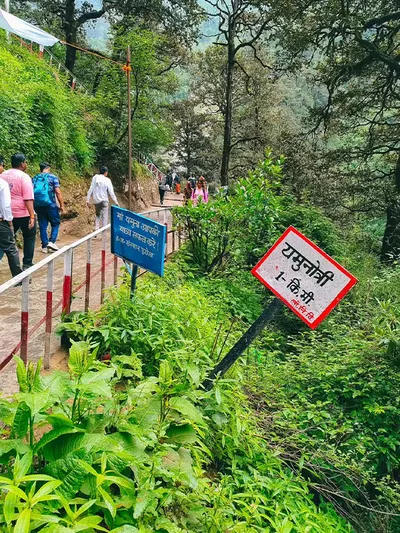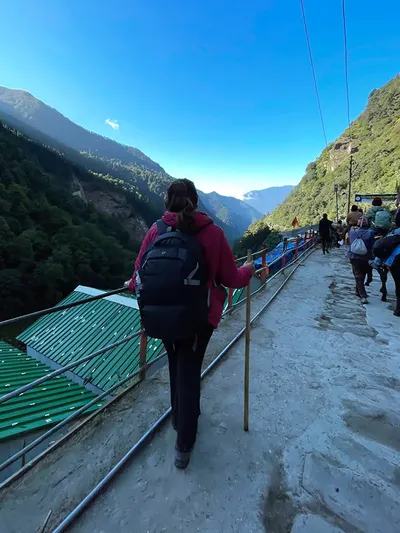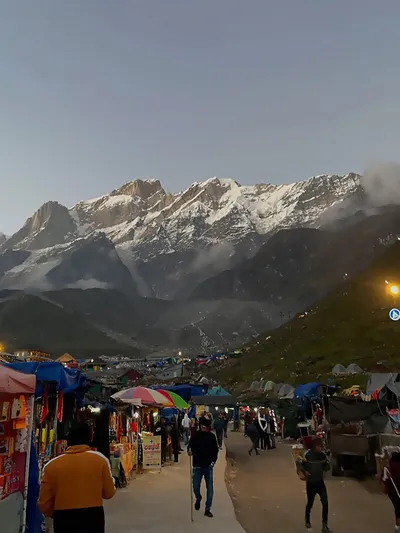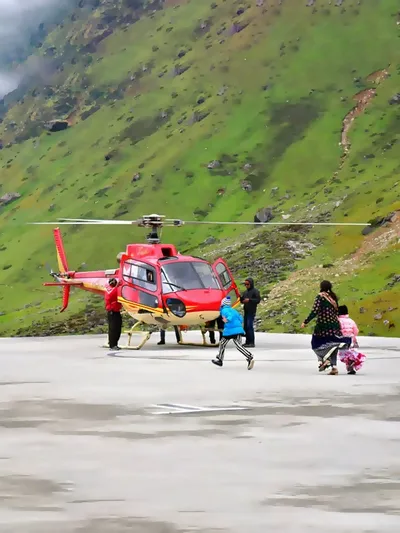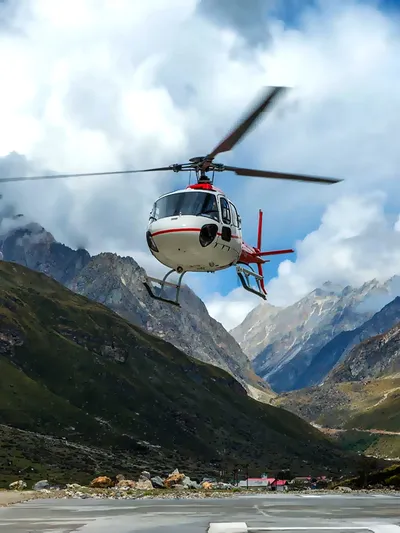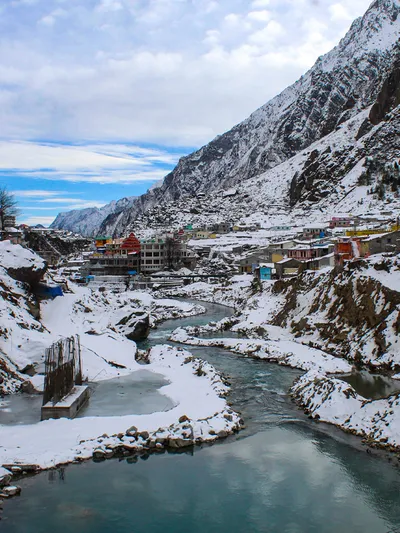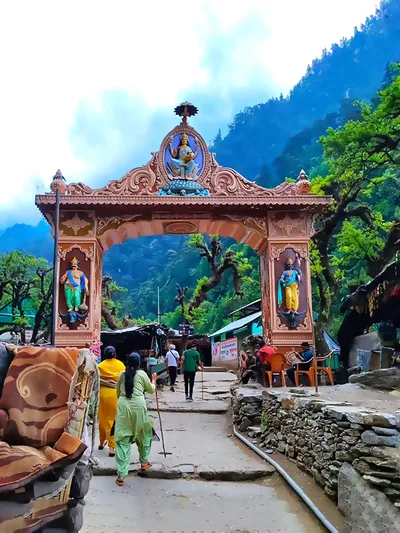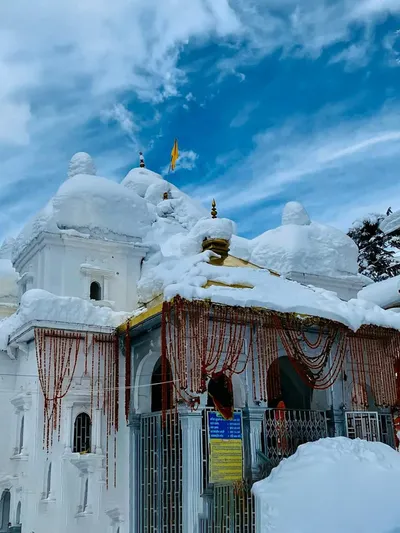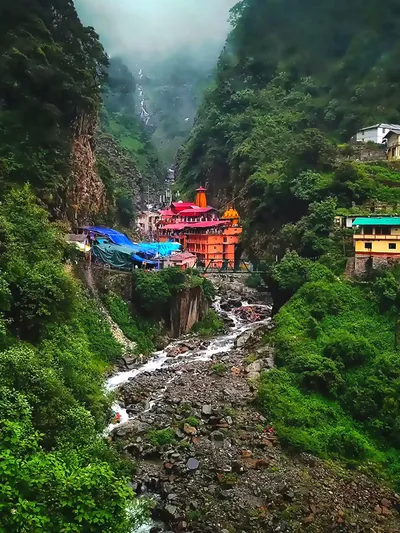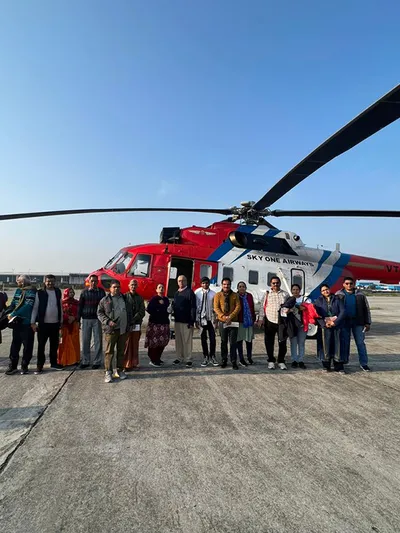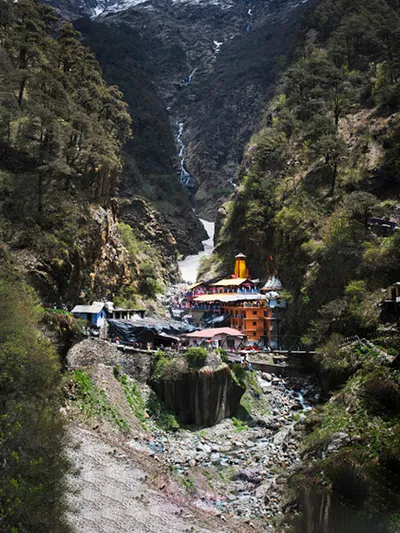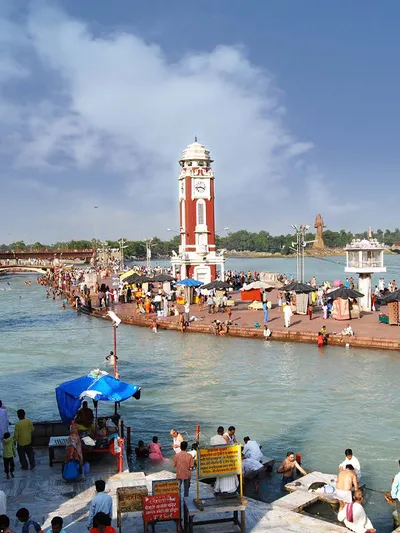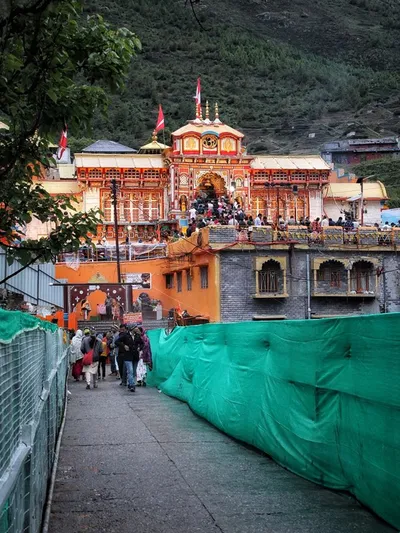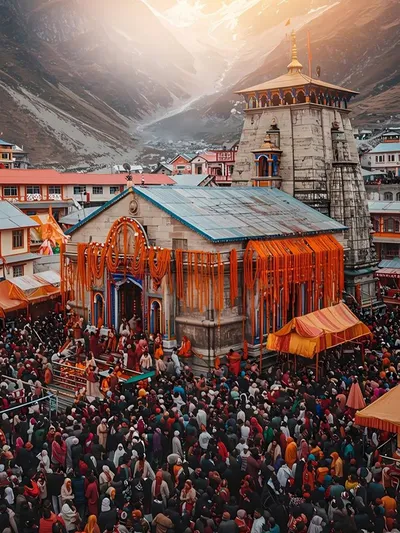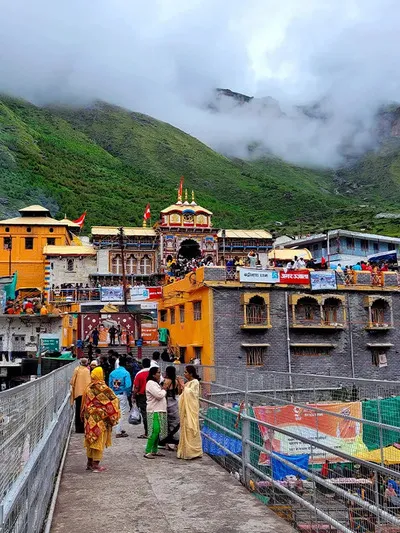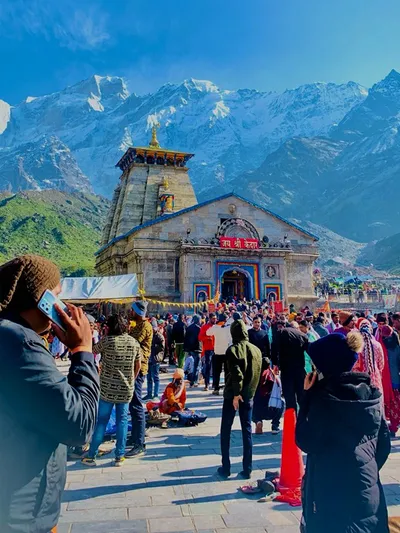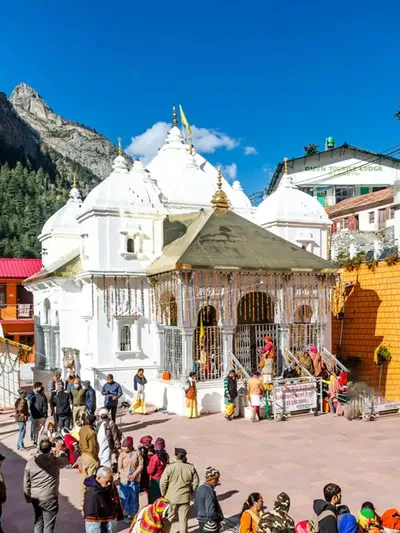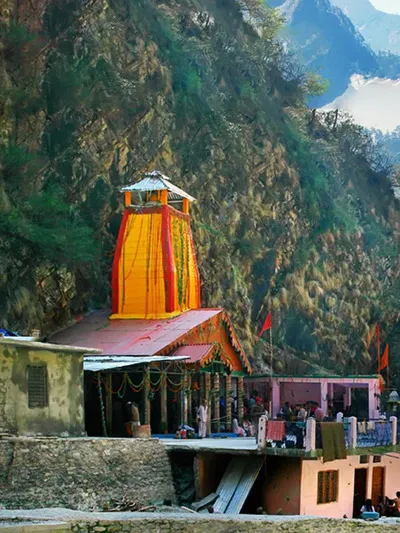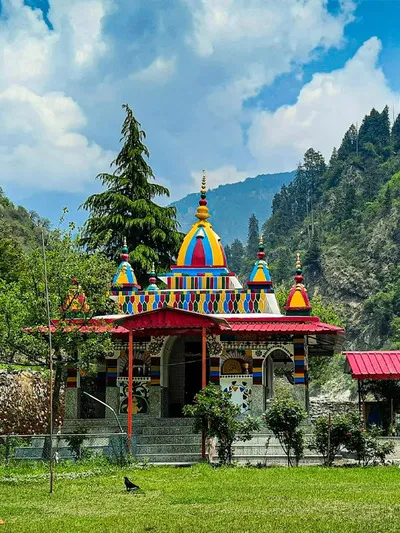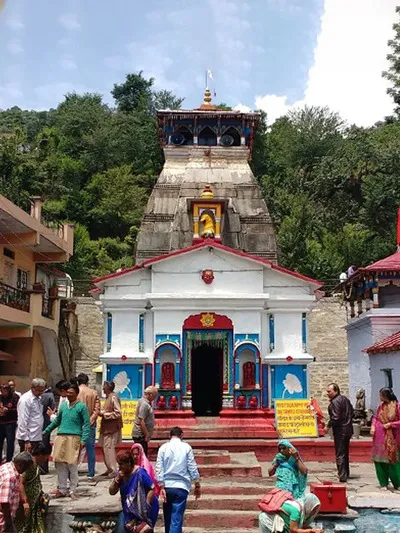Patal Bhuvaneshwar Cave – 33 Crore Gods Worship Lord Shiva
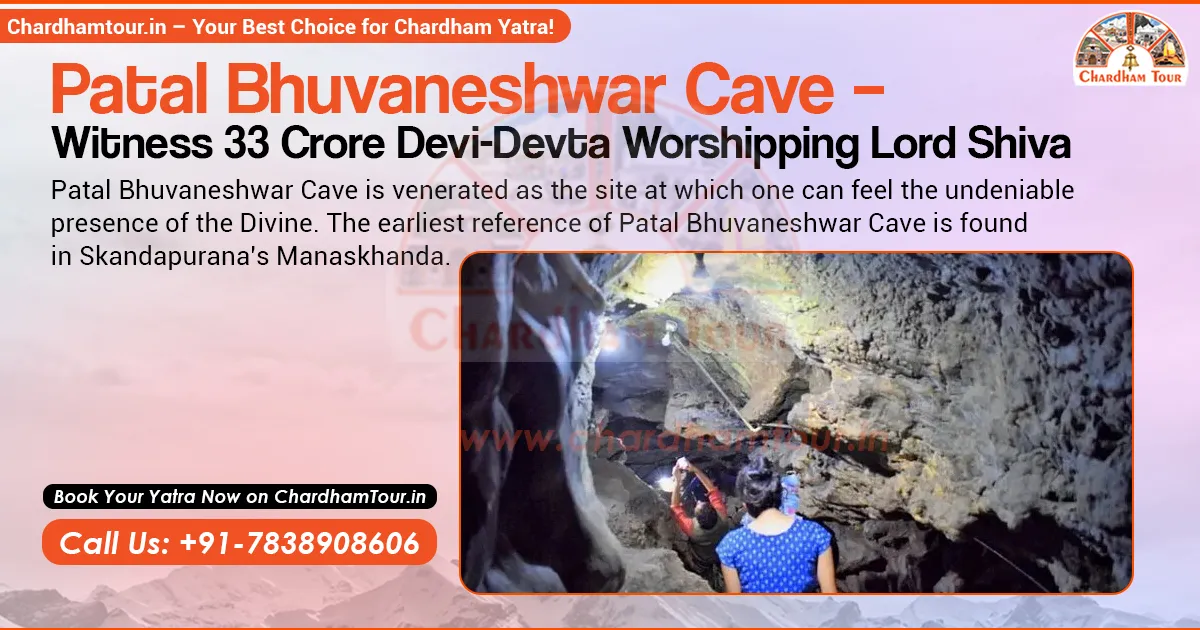
Patal Bhuvaneshwar Cave is a famous place where many people feel deep spiritual connection. According to the Skanda Purana this is the place where 33 crore Hindu gods and goddesses come to worship Lord Shiva. This underground cave temple is located in the village of Bhubaneshwar around 12.5 kilometers from Gangolihat, Uttarakhand.
The Patal Bhuvaneshwar Cave is about 160 meters long and 90 feet deep. Inside you can see many natural limestone rocks. There’s a path inside that goes to other caves. This area has proper lighting to help visitors walk safely. It feels like you are in a secret underground place that is peaceful and full of mystery.
Quick Information
- Location- Village of Bhubaneshwar, about 12.5 kilometers from Gangolihat, Uttarakhand.
- Main Deity- Lord Shiva.
- Best Time to Visit- March to November, when the weather is pleasant.
- Entry Fee- Free
- Altitude- 1350 meters above sea level.
How Lord Shiva Is Connected to Patal Bhuvaneshwar Cave
- Inside the Patal Bhuvaneshwar cave, you’ll see natural rocks shaped like many Hindu gods and goddesses. But Lord Shiva is the main god worshipped here.
- The water that falls on the Shivlingas doesn’t stay or collect in one place, it keeps flowing, which is quite interesting.
- The water inside tastes sweet and flows through the cave.
- Many people feel peaceful here, and sometimes they see spiritual things inside the cave. It is also a good place to meditate; the atmosphere is calm and refreshing.
History of Patal Bhuvaneshwar Cave
The Story of Lord Ganesh’s Elephant Head
According to Hindu stories Lord Shiva once cut off head of his son, Lord Ganesh, when he was angry. To save him, Shiva put an elephant’s head on Ganesh’s body. People believe that Ganesh’s first head fell near Patal Bhuvaneshwar Cave, which is why this place is very sacred. Many visitors come from faraway places to see Lord Ganesh’s head at this spot.
The Hidden Cave Found
The cave was hidden for a long time. It’s believed that the Pandava brothers came here during the Treta Yuga. Then, in 1191 AD, the famous saint Adi Shankaracharya found the cave again and started the pilgrimage.
Mount Kailash and Pandavas
Some people also believe that there’s a secret underground path that connects Patal Bhuvaneshwar Cave to Mount Kailash. It’s also believed that the Pandavas meditated here before their final journey to Swargarohini.
Story of King Ritupurna
It is also believed that King Ritupurna was walking in the forest when he saw magical deer. He followed it and found a secret cave. There, a big snake called Sheshnag took him inside and he saw Lord Shiva and many gods.
Suggested to Read: Popular Shiva Temples in Uttarakhand
What is Inside Patal Bhuvaneshwar Cave?
- Patal Bhuvaneshwar Cave is near a natural spring and is known as one of the most mysterious caves in Uttarakhand.
- Visitors need to leave their bags at the entrance and cameras aren’t allowed inside.
- Local guide usually goes with visitors to help them explore the cave and explain its stories.
- To reach the main part of the cave you need to walk down about 82 stairs that go deep underground. It feels like entering Patal, the hidden underworld.
- Chains are fixed to the walls inside the cave to help people walk safely and avoid slipping on the rocky path.
- After moving through dark tunnels, visitors find the statue of Sheshnag, the snake god holding the Earth on his head. Lord Narasimha’s statue is also there on the way.
Hawan Kund and the Story of Lord Ganesha
- At the entrance of the cave, there is a simple but special fire pit called a Hawan Kund.
- It is believed that King Janamejaya, son of King Parikshit, has done a fire ritual called Yajna here.
- The Yajna was to take revenge on the snake Takshaka, who killed King Parikshit. When visitors enter the cave, they see the statue of Takshaka and feel like the snake could attack at any time.
- Inside, you can see the sweet nectar (Amrit) from the holy Brahmakamal flowers falling on Lord Ganesha’s head.
- According to mythology, Maa Parvati created Lord Ganesha from her ubtan and told him to guard her while she bathed.
- Ganesha stopped Lord Shiva from entering, which upset Shiva so much that he cut off Ganesha’s head. Later, Shiva put an elephant’s head on Ganesha and used Amrita to bring him back to life.
Holy Shrines Inside the Patal Bhuvaneshwar Cave
Moving further ahead, one comes across the blessed idols of Amarnath, Badrinath, and Kedarnath being worshipped. This is symbolic of the fact that worshipping in Patal Bhuvaneshwar is equivalent to one’s paying homage at each of these renowned sacred shrines as well. There is also an idol of Kalabhairava with his open mouth and protruding tongue adjacent to this. The entire narrow passage is considered symbolic of the path through Brahmaloka that a soul has to pass through to attain the supreme goal of existence, moksha. Devout believe that everyone passing through the narrow channel would be able to attain moksha.
Shiva’s Statue and the Four Holy Gates
The depiction of Lord Shiva wearing his garland of skulls, sitting upon a majestic lion, quite symbolic of his role as the Destroyer of the cosmos, is present before Kalabhairava. It then leads to a series of four doors. It is said that each of the four doors stands for a specific attribute. The doors are named Randwar, Paapdwar, Dharamdwar, and Mokshdwar. Only two of the four are open now. It is said that Paapdwar and Randwar, the doors to sin and war, were closed right after the death of Ravana and the culmination of the Kurukshetra war, respectively. It is predicted that the third would open with the end of Kali Yuga, while the fourth would be the only functional one in the next age of Satyug.
One also comes across a podium containing an image of the heavenly Parijata tree inside Patal Bhuvaneshwar Cave. It is believed that Sri Krishna brought the beautiful plant from the heavens themselves.
Things That Make the Patal Bhuvaneshwar Cave Special
As one proceeds further, one arrives at the ground upon which Hanuman and Ahiravan fought each other, or so the legend goes. One is further led into an inner cave where the Markandeya Purana is said to have been composed by Markandeya Rishi. This path further leads to the sacred site at which ‘Pitru Tarpan’ is performed. A depiction of heavenly cow Kamdhenu bathing Brahma Kapal with her milk is present at the very site.
Next in the series of depictions are seven ponds with the turned head of a swan. Myth goes that the swan, which was given the task of protecting the waters of ponds, drank all of its water, earning Lord Brahma’s curse that its head be turned. This is followed by the beautiful Ganga flowing out of Shiva’s matted locks whilst all gods and goddesses are offering their obeisance.
Main Shivlinga
At the centre of this spiritually mysterious cave is the Shivalinga of Narmadeshwar Mahadev, accompanied by Nandi. One also comes across depictions of the Saptarshi constellation and the Milky Way galaxy as one treads further. Then one enters the Garbhagriha, the innermost sacred chamber of the Cave. There are three Shiva Lingas in here. Water droplets fall upon each of the Shivlinga alternately from the copper plates that are hung above. It is said that the copper plates were first installed by Adi Shankaracharya.
Offering worship at Sani Pradosham in this sacred site is said to bring peace to one’s ancestors dating back to twenty-one generations.
Final Shrines and the Exit Path
After the Garbhagriha, one sees the depiction of Koteshwar Mahadev. His form with open locks and snakes hanging from his neck is quite awe-inspiring. One finds a passage that allegedly leads to heaven. Herein, Pandavas and the divine couple of Shiv-Parvati are seen. Only a portion Patal Bhuvaneshwar Temple is open for the public. This marks the end of one’s exploration of the interior of the cave. Another route has been delineated for the devout to return to the main passage. On this path, one is again met with four Shiva lingams. Each of the Lingas is said to be for a particular Yuga. It is interesting to note that the Shivlinga of Kali Yuga is the largest among the four.
As one treads onto the previous path, one also comes across depictions of the heavenly elephant of Airavat and Lord Shiva’s Kamandalu.
King Rituparna and the Secret of Patal Bhuvaneshwar Cave
It is believed that King Rituparna was the first human to find Patal Bhuvaneshwar Cave. Sheshnag showed him the cave. The king saw the real gods and goddesses, who are now shown as statues inside the cave. Sheshnag warned him never to share the secret, or he would die. The king broke his promise and told his wife, and he died. The queen kept trying and reached the cave. She found statues and pictures, but no real gods. She built stairs to help pilgrims enter. Later Chand and Katyuri kings came and improved the cave.
How to Reach Patal Bhuvaneshwar Cave
By Flight
Pantnagar Airport is the nearest airport to Patal Bhuvaneshwar located 244 kilometers away. From there, taxis are available to take you directly to Patal Bhuvaneshwar. This area is well connected by good roads.
By Train
Closest railway station to Patal Bhuvaneshwar is in Tanakpur about 154 km away. From there, you can easily find taxis and buses to reach Patal Bhuvaneshwar, Gangolihat and Lohaghat. Tanakpur is well connected to big cities like Delhi, Lucknow, Agra, and Kolkata.
By Road
Patal Bhuvaneshwar can be reached by road from many popular places in Uttarakhand. You can take bus from ISBT Anand Vihar to places like Tanakpur, Champawat, Pithoragarh or Lohaghat. From there, it's easy to get local taxi or bus to reach the cave.
Frequently Asked Questions
-
1. Where is Patal Bhuvaneshwar?
Ans: Patal Bhuvaneshwar is a popular cave temple in Pithoragarh, Uttarakhand. It is well known for its spiritual importance. Inside, there are many natural rock designs, and it’s believed that Hindu gods live here.
-
2. What time does Patal Bhuvaneshwar Cave open for visitors?
Ans: The cave is open for visitors between 7 AM and 6 PM. However, visiting hours can vary sometimes, so it's best to confirm before you go.
-
3. What places can I see near Patal Bhuvaneshwar?
Ans: You can visit beautiful places near Patal Bhuvaneshwar like Berinag (tea gardens & mountain views), Chaukori (peaceful hill town), and Gangolihat (Hat Kalika Temple).
Conclusion
Patal Bhuvaneshwar is not just cave, it’s a place full of mystery and old stories. People believe this underground temple is where many Hindu gods and goddesses live. Every corner of the cave tells a story whether it’s about Lord Shiva, Lord Ganesha, the Pandavas, or King Rituparna. The natural rock shapes, flowing Amrit water, and calm feeling make this place very special for spiritual visitors. People visit this place not only to see it but also to feel close to the divine. When you go inside and come out, the cave makes you feel calm and excited. Whether you believe in the stories or not, a visit to Patal Bhuvaneshwar is an experience you won’t forget. It can be a special place for anyone.
